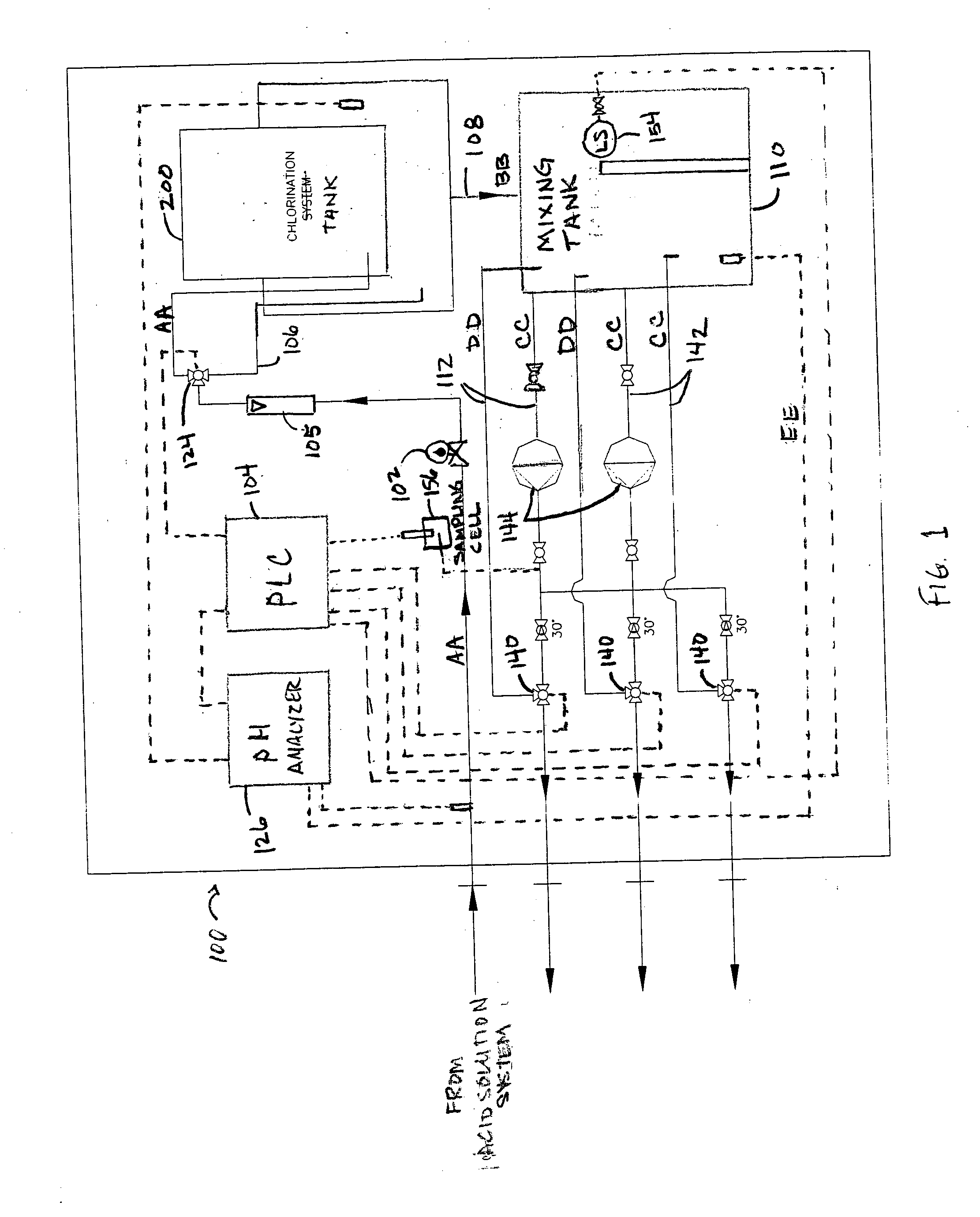Systems and methods for reducing carbonates in a chlorination system
a chlorination system and carbonate technology, applied in the field of chlorination systems, can solve the problems of high toxic and corrosive gas, significantly more expensive than gaseous chlorine, used in large-scale water treatment applications
- Summary
- Abstract
- Description
- Claims
- Application Information
AI Technical Summary
Benefits of technology
Problems solved by technology
Method used
Image
Examples
Embodiment Construction
[0015] Referring now to FIG. 1, depicted is a general schematic of an exemplary embodiment of a chlorination system 100. The various components are connected using standard piping. The process of the present system can be performed at ambient temperature or lower, i.e., about 25° C. or less.
[0016] As shown in FIG. 1, a stream of acidified make up water AA is directed from a water source to chlorination system 100. Stream AA is typically from a carbonic acid system or other acid system then pumped at a slightly higher pressure than normal line pressures. Stream AA flows through shut-off valve 102, and then through flow meter 105. Valve 102 can be either an automatic solenoid valve or a manual isolation valve. The total flow rate of acidified make up water stream AA is controllable by, for example, the operation of a metering control valve 124 in response to signals from a Programmed Logic Controller (PLC) 104 which coordinates the overall system operation. A line 106 can split a por...
PUM
| Property | Measurement | Unit |
|---|---|---|
| pressure | aaaaa | aaaaa |
| pH | aaaaa | aaaaa |
| temperature | aaaaa | aaaaa |
Abstract
Description
Claims
Application Information
 Login to View More
Login to View More - R&D
- Intellectual Property
- Life Sciences
- Materials
- Tech Scout
- Unparalleled Data Quality
- Higher Quality Content
- 60% Fewer Hallucinations
Browse by: Latest US Patents, China's latest patents, Technical Efficacy Thesaurus, Application Domain, Technology Topic, Popular Technical Reports.
© 2025 PatSnap. All rights reserved.Legal|Privacy policy|Modern Slavery Act Transparency Statement|Sitemap|About US| Contact US: help@patsnap.com


